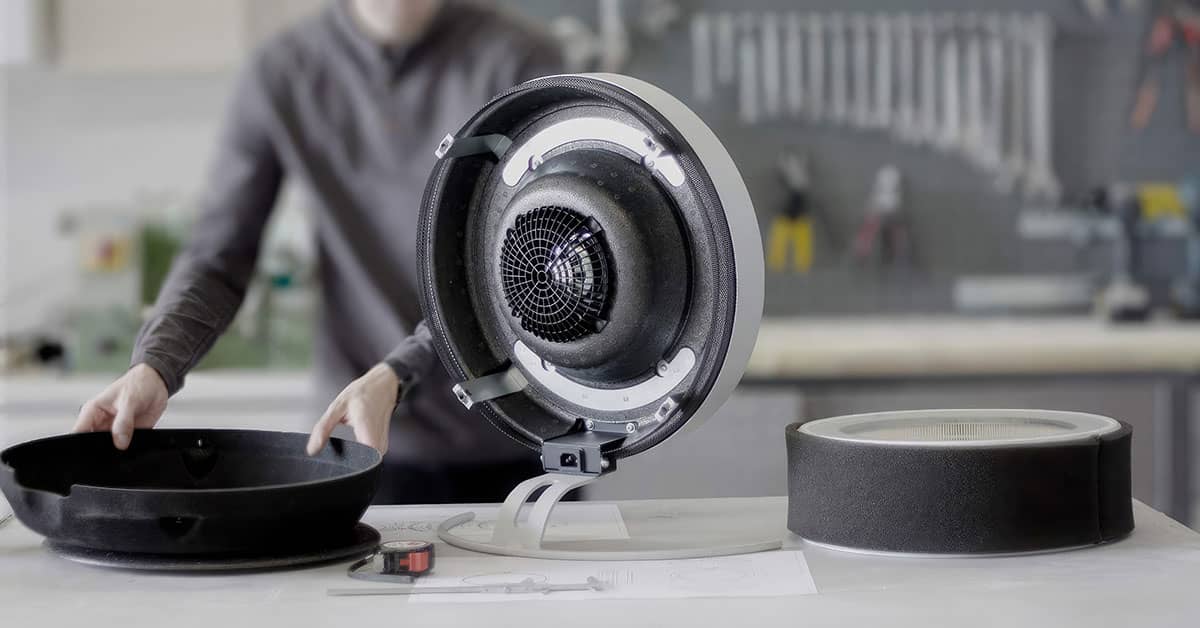
Your customer does not want your product
The world is full of great products. Some catch the eye with their beauty, others delight with an excellent user experience. Some blend so seamlessly into their environment that they go unnoticed – things just work.
A good product does not come about by chance. Success is almost always backed by investments in strategic design.
– The foundation of advanced product development is accepting the harsh truth that the customer does not actually want to purchase your product, says Sami Pyörre, who leads the design agency Edea Design. – At their core, a person is not looking for a product but a solution to achieve their goal. A customer’s willingness to purchase depends directly on how well the product supports their aspirations.
Product development often focuses on meeting functional objectives. However, it is equally important to consider the emotions the product is expected to evoke and how a person wants to be perceived by others when using it.
These aspects are best addressed by utilizing strategic design methodologies.
Focus on what matters
A product almost always involves multiple user roles.
For example, Viessmann’s retail refrigeration units must serve both the store owner and the customer – not to mention the store staff, cleaners, installers, and logistics teams. The purchasing decision is made by someone other than the end-user.
Creating a good solution requires understanding all user roles. This, in turn, requires immersing oneself in the users’ environment, observing, and conducting interviews – the core methods of strategic design.
– Early investment in customer understanding pays off many times over, says Pyörre. – When you know from the start what is important to users, product development efforts can be directed correctly. This helps avoid late and costly changes.
Customer-centricity is strategic design and product development at its best.
Cost-efficiency through design
Even the best product cannot succeed unless it can be priced competitively.
– Industrial design brings not only aesthetics and usability to product development but also commercial viability and manufacturability, says Harri Alanen, who leads vehicle design at Edea Design. – It is pointless to proceed to product development with a concept that cannot be implemented cost-effectively. For example, Valtra tractors consist of hundreds of parts, with materials and manufacturing methods for each selected based on functionality, durability, environmental considerations, and cost.
Manufacturability should be one of the cornerstones of industrial design from the very first phases of a project. This ensures that the product meets its cost targets and that product development proceeds smoothly to completion.
How to make a great product:
- Understand your customer. Get to know what your customer is striving to achieve; design for desired outcomes.
- Ensure manufacturability. Select the most effective and cost-efficient materials and manufacturing methods.
- Start early. Avoid late and costly changes: acquire customer understanding and apply technological expertise before kicking off your R&D.
Edea Design Oy
- Finnish design agency established in 1973
- Focus on industrial design, service design & strategic design
- Internal model workshop & extensive partner network for total R&D
- Known clients include ABB, Hackman, iLOQ, Konecranes, Molok, Muurikka, Oras ja Valtra
- Known as ED-Design until 2023
Products that people do not want to part with
The strategic use of design is a key part of sustainable product development.
– When positive experiences associated with a product are designed to be strong and lasting, a bond forms between the person and the product. This makes users want the product to endure and take good care of it, says Pyörre.
– A good relationship is reciprocal, Alanen adds. – The right technical solutions ensure that the product meets durability expectations and can be repaired or updated when needed.
This is how products are created that people do not want to part with.
A good product is well-designed
The world looks different when viewed through the lens of strategic design.
Successful design can be found in Oras faucets, Hackman kitchenware, Muurikka outdoor kitchens, and Molok recycling systems. It can be seen in Valtra tractors working in the fields and Ensto charging stations in parking areas. In factories, it saves energy in ABB frequency converters, and in hospitals, it saves lives with GE Healthcare patient monitors. It shapes our future in IQM quantum computers and in Fingrid’s control center for Finland’s electricity grid.
What connects all these? They have all been designed with the expertise of Edea Design.